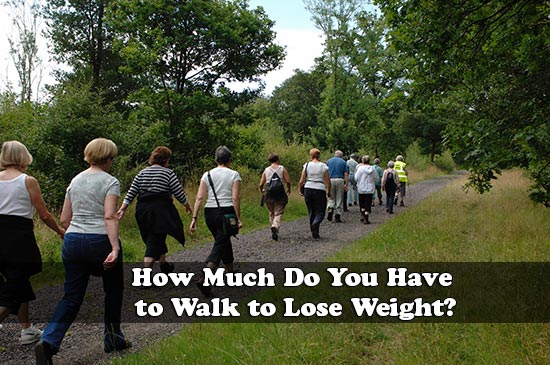How Much Do You Have to Walk to Lose Weight?

Make sure to like Living Green and Frugally on Facebook, Shop at Amazon to help support my site and explore our PINTEREST BOARDS for innovative ways you can become self-sufficient.
How Much Do You Have to Walk to Lose Weight?
In the pursuit of weight loss, many individuals turn to intensive exercise routines or strict diets. However, one of the most effective and accessible ways to shed those extra pounds is by walking. Incorporating regular walking into your daily routine can lead to significant weight loss and improve overall health.
In this article, we will explore the science behind walking for weight loss and how to make your walking routine more interesting and sustainable.
Pedometers
A pedometer, a device that tracks the number of steps you take, can be a valuable tool in your weight loss journey. By measuring your daily step count, you can set achievable goals and track your progress over time. Studies have shown that individuals who use pedometers tend to increase their physical activity levels, which can result in weight loss and improved fitness.
How Many Steps To Take to Lose Weight?
The number of steps needed to lose weight varies from person to person, depending on factors such as age, weight, metabolism, and overall activity level. However, a general guideline suggests aiming for 10,000 steps per day. This number may seem daunting initially, but gradually increasing your step count and setting realistic goals will help you achieve this target.
Research has shown that walking 10,000 steps daily can burn approximately 2000 to 3500 calories per week, which is equivalent to losing 0.5 to 1 pound of body weight. Combining walking with a balanced and healthy diet can lead to even more significant results.
How to Lose Weight by Walking
- Start Slowly: If you are new to walking or exercise in general, it’s essential to start slowly and gradually increase the intensity of your walks. Begin with short walks and gradually add more minutes and steps as you build stamina.
- Find a Comfortable Pace: While walking for weight loss, focus on maintaining a brisk pace that challenges you but allows you to hold a conversation comfortably. This will help you burn more calories without overexerting yourself.
- Incorporate Intervals: Intervals involve alternating between periods of moderate walking and faster-paced walking. This technique can help boost your metabolism and burn more calories during and after your walk.
- Walk Uphill: If possible, incorporate uphill walks or stairs into your routine. Walking uphill engages different muscles and intensifies your workout, leading to increased calorie burn.
- Engage Your Upper Body: Swing your arms while walking to engage your upper body. This simple action can add to the overall calorie burn and make your walks more effective.
- Choose the Right Footwear: Invest in a comfortable and supportive pair of walking shoes to avoid discomfort or injuries, especially if you plan on increasing your walking distance.
How to Keep it Interesting
To make your walking routine enjoyable and sustainable, consider these tips:
- Explore New Routes: Vary your walking routes to keep things fresh and exciting. Explore different neighborhoods, parks, or trails to enjoy the scenery while staying motivated.
- Walk with a Friend or Pet: Walking with a companion can make your walks more enjoyable and keep you accountable to your routine. It can also be an excellent bonding experience.
- Listen to Music or Podcasts: Create a playlist of your favorite tunes or listen to informative podcasts while walking. Music can uplift your mood, while educational content keeps your mind engaged.
- Set Challenges: Set periodic challenges for yourself, such as increasing your step count or conquering longer distances. Achieving these milestones can be incredibly rewarding and motivating.
- Join Walking Groups: Consider joining local walking groups or fitness classes. Being part of a community with shared goals can provide support and encouragement.
Walking is a simple yet powerful tool for weight loss and overall health improvement. By setting realistic goals, monitoring your progress with a pedometer, and keeping your walking routine interesting, you can turn this low-impact exercise into an effective weight loss strategy. Remember that consistency and dedication are key to achieving long-term success. So, lace up your walking shoes, step outside, and take the first strides toward a healthier, fitter you.